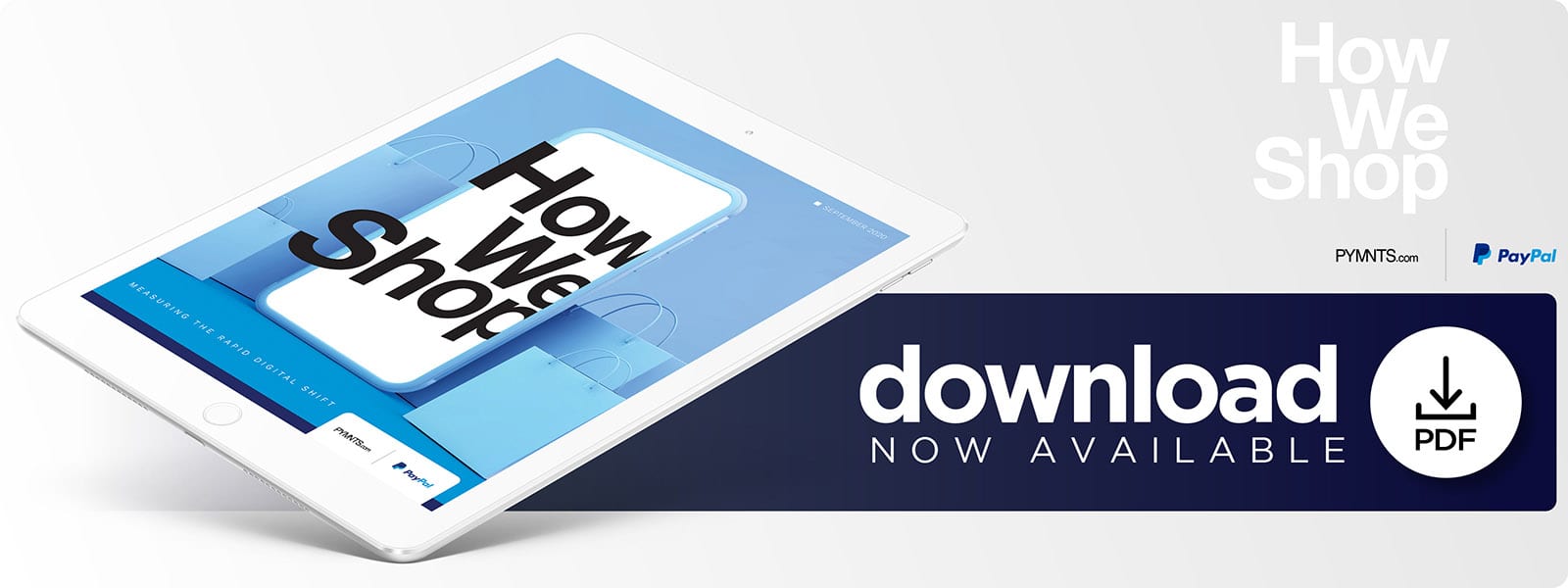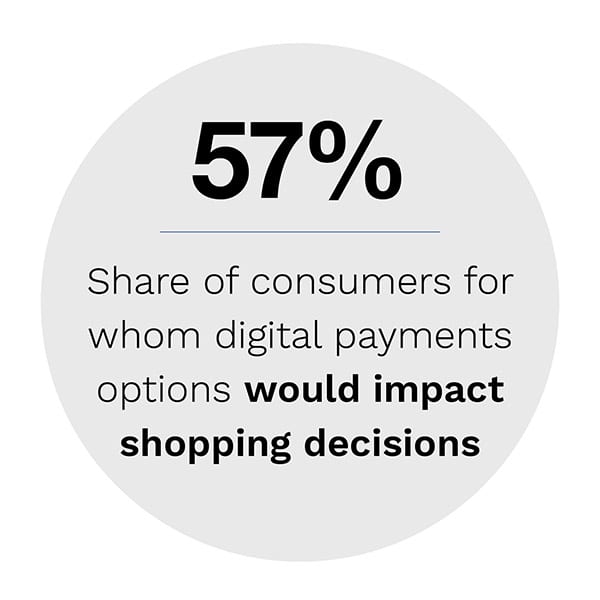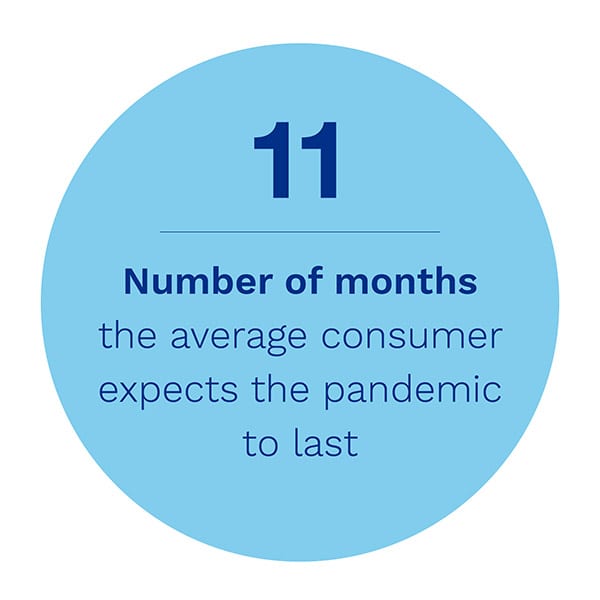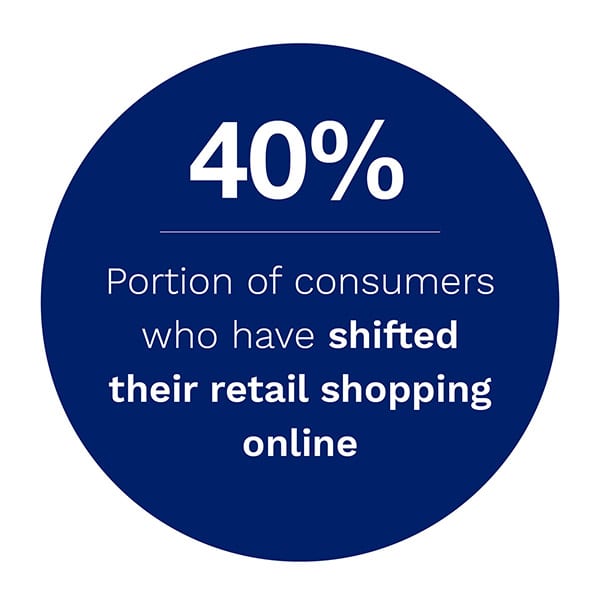New Data: The Role Of Touchless Payments In Shaping Consumer Merchant Choice

Six out of 10 consumers now say that the touchless payments options merchants make available to them can sway their decision to shop – or not to shop – in this new digital first world. The new PYMNTS How We Shop Report, in collaboration with PayPal, surveyed 2,163 U.S. consumers and identifies the five payment offerings that have now become make or break for merchants when serving their customers.
 When the World Health Organization (WHO) first declared the COVID-19 outbreak a pandemic on March 11, no one could have foreseen how it would ultimately alter United States consumers’ daily lives. There is still no telling how extensive these changes will become or if these shifts will remain in place once the pandemic has eased, but one thing is certain: The post-pandemic market will be digital.
When the World Health Organization (WHO) first declared the COVID-19 outbreak a pandemic on March 11, no one could have foreseen how it would ultimately alter United States consumers’ daily lives. There is still no telling how extensive these changes will become or if these shifts will remain in place once the pandemic has eased, but one thing is certain: The post-pandemic market will be digital.
 Consumers have been moving their daily activities away from the physical world and toward conducting them digitally even before the pandemic’s onset. Twelve percent of all U.S. consumers had shifted from shopping for retail goods in-store to shopping for them online on March 6, for example, and just 5 percent ordered food from restaurants online. These numbers rose to 40 percent and 19 percent, respectively, by June. The share of consumers shopping for groceries online increased from 4 percent to 18 percent in the same time frame.
Consumers have been moving their daily activities away from the physical world and toward conducting them digitally even before the pandemic’s onset. Twelve percent of all U.S. consumers had shifted from shopping for retail goods in-store to shopping for them online on March 6, for example, and just 5 percent ordered food from restaurants online. These numbers rose to 40 percent and 19 percent, respectively, by June. The share of consumers shopping for groceries online increased from 4 percent to 18 percent in the same time frame.
Many of the shoppers that have gone online to shop and pay no longer have any intention of going back to shopping in stores, too. Twenty-four percent of consumers have not only shifted to shopping for retail goods online, but they also plan to maintain that shift to some degree after the pandemic has subsided. Eleven percent have shifted to ordering from restaurants online and plan to keep doing so beyond the pandemic and 13 percent plan to do the same for grocery shopping.
It is therefore apparent that the pandemic has brought the U.S. retail sector to a tipping point. Just how many consumers will return to shopping in stores for retail goods and groceries after the pandemic has subsided? More importantly, which types of payment options can merchants adopt to help meet consumers’ increasing demands for digital commerce experiences?
These are just a few of the questions that PYMNTS, in collaboration with PayPal, set out to answer in the How We Shop: Measuring The Rapid Digital Shift Report. We surveyed a census-balanced panel of 2,163 U.S. consumers to learn more about how their payments demands and expectations are changing as the pandemic progresses, how merchants can cater to those demands and the extent to which these preferences are likely to persist and help shape the post-pandemic economy.
Our research shows that the merchants are being pressured to provide digital payment options to match their customers’ desires for digital-first shopping. Fifty-seven percent of all U.S. consumers now say that the availability of digital payment options would impact their decisions on where to shop, for example.
Consumers’ demands for digital payments are not limited to eCommerce shopping, either.
Many consumers are also expressing high levels of interest in using safe, touchless, in-store payment methods, and many would actually refuse to pay without them. Our research shows that 40 percent of consumers who prefer to pay with digital wallets would not  purchase from merchants that do not allow customers to pay with them while 34 percent of those who prefer paying with QR codes would not pay using any other method. It therefore falls on merchants to adopt such payment methods not only to facilitate faster eCommerce transactions but also to boost their brick-and-mortar sales.
purchase from merchants that do not allow customers to pay with them while 34 percent of those who prefer paying with QR codes would not pay using any other method. It therefore falls on merchants to adopt such payment methods not only to facilitate faster eCommerce transactions but also to boost their brick-and-mortar sales.
The rising demand for digital shopping methods is only one of many ways in which the pandemic is changing consumers’ purchasing behaviors, however, and offering digital payment options is only one of the ways in which merchants can cater to these shifting needs. How We Shop: Measuring The Rapid Digital Shift delves into the details of this shift, providing a roadmap for retailers to help them navigate a post-pandemic market.
To learn more about how the pandemic is changing U.S. consumers’ shopping habits and more, download the Report.